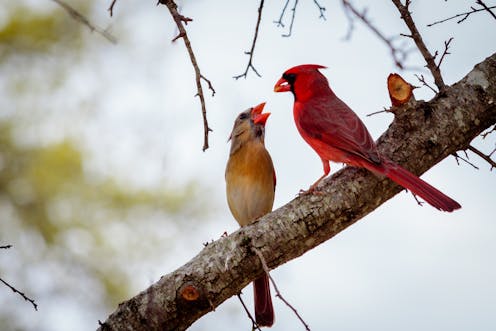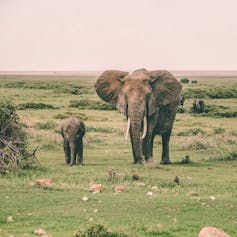
Like other nature lovers and rural residents, I have been marvelling at the many animal courtships and other mating preparations that accompany the arrival of spring in the Northern Hemisphere.
The brilliant-red male cardinals who seek out the best seeds and then tenderly feed their female mates, beak-to-beak. The robins who dutifully solicit and assess building supplies as they carefully construct their nests. The squirrels who remember which nuts have been buried where — and whose organizational skills rival the best administrative assistants.

Along with my endless delight in watching chipmunks stuffing their cheeks to refill their networks of food burrows, as a labour studies scholar, I also recognize that these dynamics are examples of work.
Wild animals work. They work hard.
The idea of work still tends to evoke particular images of manual and blue-collar jobs, but the realities of people’s livelihoods have always been and continue to be much more diverse. This is true for people and animals alike.
Daily life for wild animals involves an elaborate and constant series of tasks and challenges.
Subsistence work
Finding food and water. Locating appropriate shelter and protection from the elements, in all seasons. Trying to avoid predators, including humans, our vehicles and our weapons. Navigating landscapes that change dramatically and become even more dangerous with every new road, building and pipeline, not to mention the droughts, floods and other weather events that result from climate change.

This is subsistence work. This is the work wild animals do to survive.
The dynamics become even more challenging when you add reproduction to the mix. Whether guarding a nest of chicks or a den of cubs, animal parents must be vigilant and highly attuned to myriad sights and sounds. The young must be guarded, fed, comforted and taught.
Young animals are not only taught to survive, they are also taught how to thrive and negotiate the social realities of their species, and often their particular community. This includes the need to understand relationships, social expectations, hierarchies and ways of communicating. This is care work.
Every animal mother is a working mother
The slogan “every mother is a working mother” was coined by feminists who wanted to draw attention to essential, and often overlooked and devalued, unpaid domestic labour.
Feminist political economists now use the term social reproduction to highlight the countless daily tasks carried out in homes and families, predominantly by women. These tasks ensure the maintenance of whole generations of people — and subsidize every society and economy.
I argue that animals also engage in social reproduction.
Biological reproduction is just the beginning. The effect of animals’ subsistence and care work is the social reproduction of their young, their group and their species.
In fact, I suggest we recognize that wild animals are also integral to what I call eco-social reproduction: The subsistence and care work they do contributes to the maintenance of ecosystems.
For example, the World Wildlife Fund points out:
In tropical forests, elephants create clearings and gaps in the canopy that encourage tree regeneration. In the savannas, they reduce bush cover to create an environment favourable to a mix of browsing and grazing animals. The seeds of many plant species are dependent on passing through an elephant’s digestive tract before they can germinate. It is calculated that at least a third of tree species in central African forests rely on elephants in this way for distribution of seeds.
In other words, the subsistence and care work elephants do daily in order to survive and raise their young also benefits other species and their ecosystem: It’s a process of eco-social reproduction.

Creatures great and small contribute to eco-social reproduction through their daily labour. Those chubby-cheeked squirrels and chipmunks? They are also invaluable seed-dispersers.
And humans are directly affected, most obviously by bees and other pollinators whose daily subsistence labour pollinates about a third of our food crops.
Thinking about wild animals and their actions in this way offers a different perspective on our multi-species communities. If a raccoon leaves a messy mural of orange peels and tea bags on your driveway, you could pause and recognize that she or he is, like you, working to survive and care for loved ones, and perhaps feel some empathy alongside the irritation.
Start seeing animals differently
Animals’ dietary choices also result from need rather than greed and, unlike ours, are not fuelling climate change.
Recognizing the complexity of the lives of the other species with whom we share this planet can also be part of expanding our webs of compassion and solidarity.
We should broaden our intellectual horizons by integrating Indigenous ways of knowing, the social sciences and scientific approaches, as we pursue deeper knowledge, and, most importantly, more ethical action, including in political and economic arenas.
We have many opportunities to see animals differently and more carefully.
There is an axiom that often circulates about the behaviour of Homo Sapiens: “Humans: We’re not the only species, we just act like it.” Let’s not.
Read more: How Indigenous knowledge advances modern science and technology
Kendra Coulter receives funding from the Social Sciences and Humanities Research Council of Canada.
This article was originally published on The Conversation. Read the original article.







